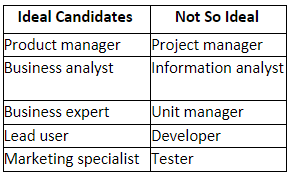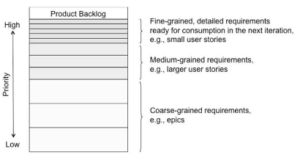Mastering the Role of Product Owner – Best Practices
/*Mastering the Role of Product Owner – Best Practices

What do you think of when you hear “Product Owner?” Do you think of someone whose job seems fuzzy around the edges, do you think of the person representing a project, the person in charge of the backlog? Product Owners wear many hats, and it can be unclear what their purpose is for a project when they aren’t executing it effectively. In this article we will discuss what a PO’s role is, who can be a Product Owner, and five best practices to be an effective PO.
Let’s start with the basics: what is the “Product Owner” role? The Product Owner’s role in Agile projects is to represent the stakeholders and be the voice of the customer. They are responsible for developing the product vision and then maximizing the value of the product the team delivers to the business. They are also responsible for managing the backlog, ensuring the team ALWAYS works on high value stories, which they then review and provide feedback on. It is important for the PO to support the Scrum Master to develop release and sprint plans. Anyone can play the role of a PO; however, some candidates are better suited than others. Ideal candidates could include product managers, business analysts, business experts, lead users, and marketing specialists.
Now that you know what the PO’s job is, here are 5 important best practices to keep a Product Owner accountable and effective in their role.
1. Focus on Increasing Value
The number one priority for a Product Owner is to focus on increasing value delivery to the customer. The PO can do this by communicating the product vision clearly with the team throughout the project and by regularly interacting with the customer. The PO can then use these needs and preferences to guide product development. Maximizing value should be at the forefront of the PO’s mind through each step and decision.
2. Refine the Backlog on a Regular Basis
After the roadmap comes managing the backlog. This is a task that should be done often, so the team is provided with clear next steps, which allows them to focus on implementing their tasks. Criteria for prioritization could include
- customer value
- cost of delay
- urgency of feedback
- Size
- Dependency
- Useability
By regularly refining the backlog, the team can provide continuous delivery of value to the customer.
3. Collaborate with the Customers and the Team
The customer provides requirements that are valuable to them, and the team puts the plan in motion, so it is important to collaborate with both throughout the project. Communication with the customer will create accurate user stories and ensure that product expectations are being met through continuous delivery and feedback. Communication with the team will keep them on track with what the customer wants and will help the PO to manage the backlog more appropriately. This will also keep the team motivated and engaged throughout the project; they can count on the PO to keep them in the loop.
4. Be ‘Product Oriented’ over ‘Project Oriented’
It is the PO’s job to be ‘product oriented’ over ‘project oriented’. This means that they focus on enhancing development abilities and design to maximize value, shifting their perspective from doing projects to the perspective of delivering, maintaining, and marketing the product. This brings us right into the final best practice now that the PO is holding themselves accountable for the project’s outcomes, not the project itself.
5. Take Responsibility
Outside of creating the product vision and maintaining the backlog, it can be tempting to take a back-row seat after the project gets going. However, the Product Owner should continue to be present and keep an eye on the team’s progress. Being present means attending ceremonies and ensuring the team has access to them when needed. This will help the PO to accurately update the backlog and plan a reasonable amount of work for the team to complete in each sprint. Taking responsibility means showing up as the Product Owner; supporting the team to make sure the product is on track to maximize value.
To wrap it all up, the 5 main best practices to be an effective Product Owner are to focus on increasing value, refine the backlog on a regular basis, collaborate with customers and the team, be ‘product oriented’ over ‘project oriented’, and take responsibility. The PO wears many hats, but it is possible to juggle them effectively, resulting in increased value of the product and satisfaction of the team.
Want to learn more? Check out our webinar on Youtube to dive deeper into the role of the Product Owner.
Need coaching to strengthen the PO role for yourself or PO role within your organization? Start a conversation with our Enterprise Agile Coach, NK Shrivastava

